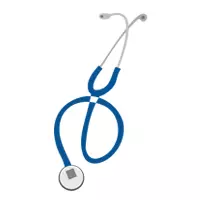- Home
- Medical news & Guidelines
- Anesthesiology
- Cardiology and CTVS
- Critical Care
- Dentistry
- Dermatology
- Diabetes and Endocrinology
- ENT
- Gastroenterology
- Medicine
- Nephrology
- Neurology
- Obstretics-Gynaecology
- Oncology
- Ophthalmology
- Orthopaedics
- Pediatrics-Neonatology
- Psychiatry
- Pulmonology
- Radiology
- Surgery
- Urology
- Laboratory Medicine
- Diet
- Nursing
- Paramedical
- Physiotherapy
- Health news
- Fact Check
- Bone Health Fact Check
- Brain Health Fact Check
- Cancer Related Fact Check
- Child Care Fact Check
- Dental and oral health fact check
- Diabetes and metabolic health fact check
- Diet and Nutrition Fact Check
- Eye and ENT Care Fact Check
- Fitness fact check
- Gut health fact check
- Heart health fact check
- Kidney health fact check
- Medical education fact check
- Men's health fact check
- Respiratory fact check
- Skin and hair care fact check
- Vaccine and Immunization fact check
- Women's health fact check
- AYUSH
- State News
- Andaman and Nicobar Islands
- Andhra Pradesh
- Arunachal Pradesh
- Assam
- Bihar
- Chandigarh
- Chattisgarh
- Dadra and Nagar Haveli
- Daman and Diu
- Delhi
- Goa
- Gujarat
- Haryana
- Himachal Pradesh
- Jammu & Kashmir
- Jharkhand
- Karnataka
- Kerala
- Ladakh
- Lakshadweep
- Madhya Pradesh
- Maharashtra
- Manipur
- Meghalaya
- Mizoram
- Nagaland
- Odisha
- Puducherry
- Punjab
- Rajasthan
- Sikkim
- Tamil Nadu
- Telangana
- Tripura
- Uttar Pradesh
- Uttrakhand
- West Bengal
- Medical Education
- Industry
Evergreen Talk Series: Position paper published in JAPI indicated that Linagliptin is simplifying T2DM management in a Wide Range of Patients - Video
Overview
Presenting the Evergreen Talk Series featuring Dr. Brij Mohan Makkar, a Senior Diabetologist and Obesity Specialist from Delhi, Dr Sameer I. Dani, an Interventional Cardiologist from Ahmedabad, and Dr. Tukaram Jamale, a Nephrologist and Kidney Transplant Physician who serves as the Head of the Department at KEM Hospital Mumbai. They provide their insights on the use of Linagliptin, Dapagliflozin, and Metformin for diabetic patients.
Bringing viewpoints from the different specialities of Diabetology, Cardiology and Nephrology they share their views about the use of Linagliptin for T2DM management and its applicability as monotherapy.
Dr Brij Mohan Makkar: Gliptins, as a class, are considered the safest option among Oral Antidiabetic Drugs (OADs). Now, of the gliptins, Linagliptin has the best profile. It is the only gliptin supported by two Cardiovascular Outcome Trials. The CAROLINA trial involved individuals with a high risk of atherosclerotic cardiovascular disease and renal risk patients, and Carolina was against an active comparator. Both studies clearly demonstrated its safety in terms of cardiovascular risk. Additionally, there are added benefits in terms of reducing albuminuria in individuals with early kidney involvement. This profile is one of the best options among antidiabetic agents, given its virtually no risk of hypoglycemia, no weight gain, decent reduction in HbA1c, compatibility with other oral agents, and lack of interactions with statins and antihypertensives.
Dr Sameer I Dani: Linagliptin is weight-neutral and does not require dose modification in a broad range of diabetic patients. It has very little impact on cardiac, renal, or hepatic comorbidities regarding both the drug's use and dosage. It offers multiple clinical advantages with a lot of safety across a wide range of patients. So, that is why it is an evergreen oral antidiabetic agent, suitable for use as monotherapy or in combination with dapagliflozin.
Dr Tukaram Jamale: We have extensively used linagliptin in patients with chronic kidney disease, and, in my opinion, it holds true for patients both with and without other comorbidities.






